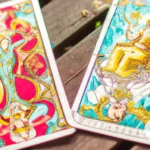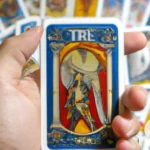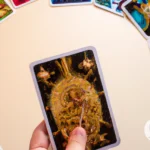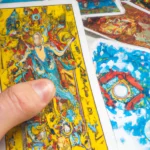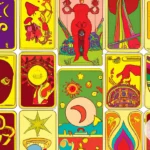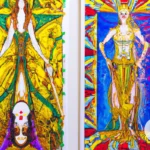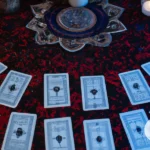As we delve into the mysterious world of Tarot, we encounter a plethora of decks, each with their own unique style and symbolism. Yet, there remains one deck that stands out as the original and most revered amongst Tarot enthusiasts – the Marseille Tarot. With its distinctive artwork and centuries-old history, the Marseille Tarot continues to captivate and fascinate even modern readers. In this article, we will explore the history, symbolism, and meaning of the Marseille Tarot, and discover why it remains a staple in Tarot divination practice. Join us on this journey of discovery as we unravel the mysteries of the Marseille Tarot.
The History of the Marseille Tarot
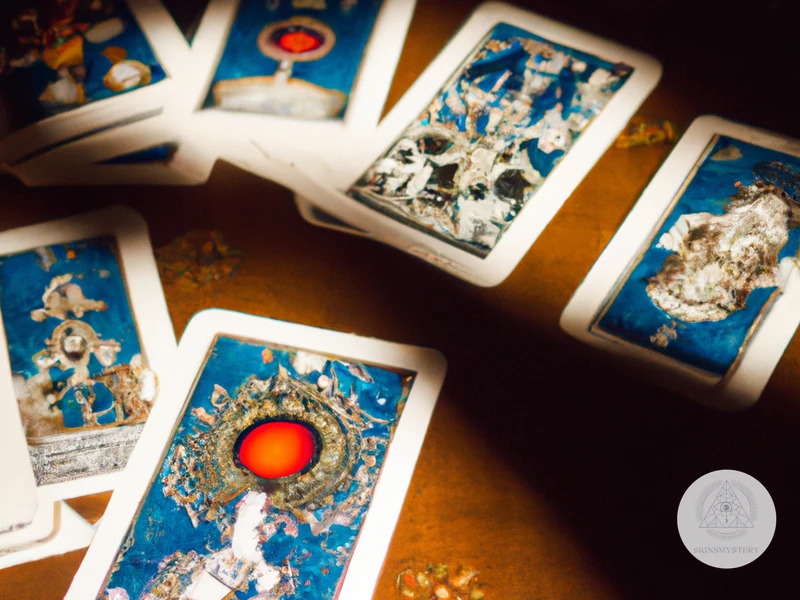
The origins and development of the Marseille Tarot are shrouded in mystery and controversy. Despite its enigmatic beginnings, the Marseille Tarot has become a cornerstone of tarot practice and interpretation. In order to understand the significance of this deck, it is important to explore its history, from its ancient roots to its modern-day prominence. In this section, we will take a journey through time to discover the story of the Marseille Tarot, including its origins, evolution, and symbolism. We will also examine how this particular deck differs from other popular decks, such as the Rider-Waite Tarot and the Golden Dawn Tarot, as well as the Tarot de Besançon, which played a pivotal role in the development of the Marseille Tarot.
Origins of the Tarot
The exact origins of the Tarot are uncertain and surrounded by mystery and speculation. Some historians and scholars believe that the Tarot may have originated in Egypt or ancient China, while others suggest that it was developed in medieval Europe.
One theory is that the Tarot was created as a set of playing cards in Italy in the 14th or 15th century, with the Major Arcana serving as trump cards. These decks were used for a variety of popular card games, in addition to divination and fortune-telling.
Another theory links the Tarot to the Kabbalah, a mystical Jewish tradition that assigns a symbolic meaning to each letter of the Hebrew alphabet. This theory suggests that the Major Arcana cards of the Tarot correspond to the 22 letters of the Hebrew alphabet and their associated esoteric meanings.
Yet another theory proposes that the Tarot may have been influenced by ancient Egyptian occult practices, as some of the images on the cards bear a resemblance to Egyptian hieroglyphs and symbols.
Despite the uncertainty surrounding its origins, the Tarot has become a widely recognized tool for divination and self-discovery, influencing numerous tarot decks and interpretations worldwide.
The Marseille Tarot Emerges
In the late 14th century, a new type of playing cards emerged in Europe. These cards were used for games and featured four suits, similar to the modern-day playing cards of spades, hearts, diamonds, and clubs. Eventually, these cards were adapted for divinatory purposes and became what we know today as tarot cards.
The exact origins of the Marseille Tarot are somewhat of a mystery. However, it is believed that the tarot was first introduced to Marseille, France in the late 15th century. The city had a bustling port and was a center for trade and commerce, making it an ideal location for the spread of new ideas and cultural practices.
Initially, tarot cards were not used for divinatory purposes, but rather as a form of entertainment. It wasn’t until the 18th century that the tarot began to be taken more seriously as a tool for divination and spiritual insight.
The first known Marseille Tarot deck was created by Jean Noblet in 1650. The deck consisted of 78 cards, with 22 major arcana cards and 56 minor arcana cards divided into four suits: swords, cups, coins, and batons. The deck’s simple designs and bold colors soon became the standard for other tarot decks to follow.
The Marseille Tarot gained popularity throughout Europe in the 18th and 19th centuries. The tarot’s emphasis on visual symbolism and archetypal imagery appealed to the romantic sensibilities of the time. The tarot began to be used not only for divination, but also for artistic inspiration and spiritual contemplation.
Today, the Marseille Tarot remains one of the most widely used and influential tarot decks in the world. Its timeless imagery and profound symbolism continue to captivate and inspire seekers of spiritual insight and personal growth.
The Evolution of the Marseille Tarot
Throughout the centuries, the Marseille Tarot went through various changes and modifications, shaping into the deck it is today. Here are some of the significant milestones in the evolution of the Marseille Tarot:
- 16th century: The original Marseille Tarot deck was created in the early 16th century in France, with a few surviving examples from this period;
- 17th century: The tarot deck was mass-produced in the 17th century, allowing it to spread beyond the borders of France. This led to the creation of many different variations of the Marseille Tarot, each with its unique design and symbolism;
- 18th century: In the 18th century, the Marseille Tarot became the most popular deck in Europe, inspiring many occultists, diviners, and scholars. During this time, the deck influenced the creation of other tarot decks, including the Rider-Waite-Smith Tarot;
- 19th century: In the 19th century, the artistic styles used in the Marseille Tarot underwent significant changes. The card illustrations became more detailed, reflecting the romanticism of the time period;
- 20th century: In the early 20th century, Oswald Wirth, a Swiss occultist, published an influential book on tarot reading that featured illustrations influenced by the Marseille Tarot. Later, in the 1960s, French cartomancer Paul Marteau published a version of the Marseille Tarot that became very popular in France.
These modifications over centuries have resulted in the Marseille Tarot having a rich history and a unique set of characteristics that continue to inspire and influence tarot readers all over the world.
The Symbolism of the Marseille Tarot
As we delve into the world of the Marseille Tarot, we cannot ignore the significance of its symbolism. The art of divination through tarot cards relies heavily on the use of symbols, and the Marseille Tarot is no exception. Each card is adorned with intricate artwork that holds layers of meaning and interpretation. From the Major Arcana to the Minor Arcana, every symbol, color, and number in the Marseille Tarot has a purpose and significance. Through understanding the symbolism of the Marseille Tarot, we can unlock the wisdom and insights that these cards have to offer.
Major Arcana
The Major Arcana is an essential part of the Marseille Tarot deck. These cards are the most significant and carry significant symbolism and meaning. There are 22 Major Arcana cards in total, and each card represents a particular archetypal figure or concept.
The Fool: The Fool is the first card in the Major Arcana, and it represents new beginnings and innocence. This card symbolizes spontaneity and impulsivity, and it can also signify a need for adventure and taking risks.
The Magician: The Magician symbolizes creativity, skill, and manifestation. This card indicates that the querent has the power to make their desires come to life through their efforts and talents and the use of their resources.
The High Priestess: The High Priestess represents intuition, the subconscious, and hidden knowledge. This card signifies that the answer to a particular question lies within, and the querent needs to trust themselves and their instincts to find the right path.
The Empress: The Empress represents nurturing, abundance, and creativity. This card signifies that the querent needs to focus on self-care and creativity.
The Emperor: The Emperor represents authority, leadership, and structure. This card signifies that the querent needs to take responsibility and establish clear boundaries.
The Hierophant: The Hierophant represents tradition, spirituality, and institutions. This card signifies that the querent may benefit from seeking guidance from a mentor, teacher, or religious/spiritual figure.
The Lovers: The Lovers represent love, harmony, and choice. This card signifies that the querent may be facing a significant decision in their relationship and needs to weigh their options carefully.
The Chariot: The Chariot represents determination, control, and victory. This card signifies that the querent needs to focus on their goals and overcome obstacles.
Justice: Justice represents fairness, balance, and truth. This card signifies that the querent needs to seek justice or defend their rights.
The Hermit: The Hermit represents introspection, solitude, and inner wisdom. This card signifies that the querent needs to take time alone to reflect and find inner clarity.
The Wheel of Fortune: The Wheel of Fortune represents destiny, life cycles, and change. This card signifies that the querent needs to embrace the ups and downs of life and be open to new opportunities and possibilities.
Strength: Strength represents courage, patience, and inner strength. This card signifies that the querent has the power to overcome obstacles and challenges with grace and determination.
The Hanged Man: The Hanged Man represents surrender, letting go, and sacrifice. This card signifies that the querent needs to release control and trust the process for a better outcome.
Death: Death represents transformation, change, and rebirth. This card signifies that the querent needs to let go of the old to make room for something new.
Temperance: Temperance represents balance, moderation, and harmony. This card signifies that the querent needs to find balance and harmony in their life.
The Devil: The Devil represents negativity, addiction, and temptation. This card signifies that the querent needs to resist negative temptations and overcome their fears.
The Tower: The Tower represents a sudden change, upheaval, and destruction. This card signifies that the querent may experience a significant crisis that will lead to transformation and growth.
The Star: The Star represents hope, faith, and inspiration. This card signifies that the querent needs to stay positive and trust that their dreams will come true.
The Moon: The Moon represents illusion, mystery, and ambiguity. This card signifies that the querent may need to confront their fears and trust their intuition.
The Sun: The Sun represents vitality, success, and positivity. This card signifies that the querent is experiencing success and happiness at this time.
Judgement: Judgement represents rebirth, renewal, and transformation. This card signifies that the querent is experiencing a significant change that will lead to personal growth and renewal.
The World: The World represents completion, fulfillment, and achievement. This card signifies that the querent has achieved their goals and completed their journey for now.
Minor Arcana – Suits and Court Cards
The Minor Arcana of the Marseille Tarot consists of four suits: Swords, Cups, Wands, and Coins. Each suit contains Ace to Ten numbered cards and four court cards: Page, Knight, Queen, and King.
Swords:
The Swords represent the element of air and the mental realm. They relate to thoughts, communication, and decision-making. The Swords cards often depict scenes of conflict, challenge, and struggle. In readings, they can indicate difficult decisions, mental anguish, or the need for clear communication.
Cups:
The Cups represent the element of water and the emotional realm. They relate to feelings, relationships, and intuition. The Cups cards often depict scenes of love, romance, and friendship. In readings, they can indicate emotional fulfillment, creative inspiration, or the need to connect with others.
Wands:
The Wands represent the element of fire and the spiritual realm. They relate to passion, creativity, and energy. The Wands cards often depict scenes of inspiration, action, and adventure. In readings, they can indicate enthusiasm, ambition, or the need for spiritual growth.
Coins:
The Coins represent the element of earth and the material realm. They relate to money, career, and physical security. The Coins cards often depict scenes of wealth, prosperity, and stability. In readings, they can indicate financial gains, career opportunities, or the need for practicality and groundedness.
Court Cards:
The four court cards in each suit represent different aspects of personality or behavior. The Page relates to curiosity, learning, and new beginnings. The Knight represents action, adventure, and growth. The Queen symbolizes nurturing, intuition, and emotional intelligence. The King embodies authority, leadership, and maturity.
The Minor Arcana of the Marseille Tarot can provide insights into everyday life and personal relationships. The Four Suits and Court Cards offer a range of perspectives to consider when interpreting a reading.
Numerology and Color Symbolism
The Marseille Tarot deck is not only distinguished by its unique and complex symbolism, but also by its intricate use of numerology and color symbolism. Each card in the deck has a number and a specific color that hold a deeper meaning.
Numerology:
Numerology is an ancient practice that assigns a numerical value to each letter of the alphabet, which then corresponds to a certain meaning. In the Marseille Tarot, the numbers on the cards reflect their significance and can provide insight into their interpretation.
The Major Arcana cards are numbered 0-21, with the Fool card being 0, while the Minor Arcana cards are numbered from 1-10. The numbered cards of the Minor Arcana also have a corresponding number of symbols on them. For example, the Three of Swords has three swords depicted on it.
Color Symbolism:
Colors have been used throughout history to represent different emotions, feelings, and concepts. Similarly, the colors in the Marseille Tarot hold immense significance and can influence the interpretation of each card.
The Major Arcana cards each have a dominant color that corresponds to their meaning. For example, The Magician card is predominantly yellow, which represents intelligence, communication, and creativity. The Tower card is primarily red, symbolizing passion and drive, but also warning of danger and sudden change.
The Minor Arcana is divided into four suits, each with its own corresponding color. The Cups suit is associated with the color blue, representing emotion and sensitivity. The Swords suit is linked with the color yellow, symbolizing intellect and the mind. The Wands suit is associated with the color red, reflecting passion and creativity, while the Pentacles suit is linked with the color green, symbolizing prosperity and abundance.
To help understand the relationship between numerology and color symbolism, below is a table summarizing the numbers, associated colors, and their meanings in the Marseille Tarot deck:
| Number | Color | Meaning |
|---|---|---|
| 0 | White | Beginnings, innocence, infinite potential |
| 1 | Red | New beginnings, passion, action |
| 2 | Orange | Balance, partnership, harmony |
| 3 | Yellow | Creativity, communication, self-expression |
| 4 | Green | Stability, structure, balance |
| 5 | Blue | Growth, change, spiritual evolution |
| 6 | Indigo | Spiritual growth, intuition, insight |
| 7 | Purple | Mystery, spiritual awakening, transformation |
| 8 | Pink | Love, compassion, relationships |
| 9 | Gold | Fulfillment, success, abundance |
By understanding the numerical and color symbolism in the Marseille Tarot, interpreters can gain a deeper understanding of the messages and meanings behind each card.
The Meaning of the Marseille Tarot
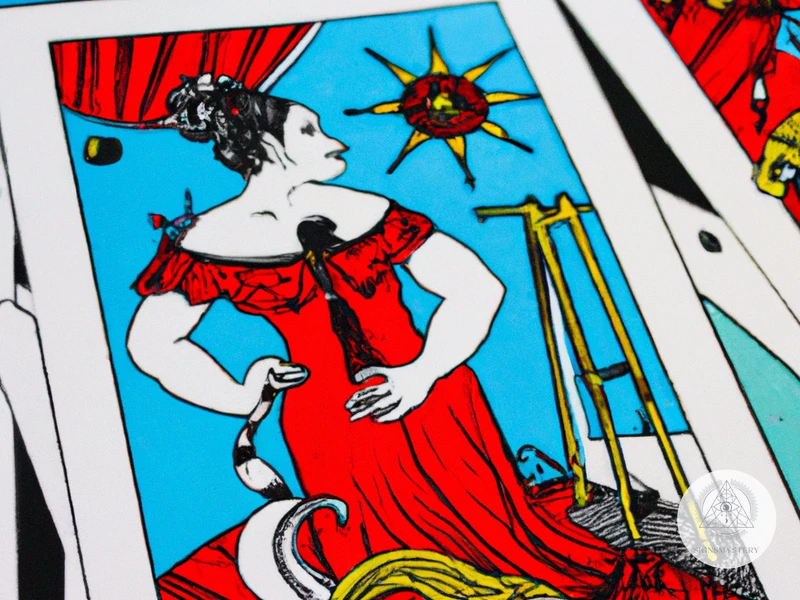
Now that we’ve explored the history and symbolism of the Marseille Tarot, we come to the heart of the matter – the meaning of the cards. The Marseille Tarot is more than just a tool for divination. It is a mirror of the human experience, reflecting the joys and struggles we all face on our journey through life. Each card holds a unique message and interpretation, rooted in centuries of tradition and wisdom. In this section, we’ll delve into the art of reading the Marseille Tarot, from understanding the individual cards to interpreting spreads and using the deck for personal growth and spiritual development. Get ready to unlock the secrets of the Marseille Tarot and discover its profound insights into the human condition.
How to Read the Cards
Reading the Marseille Tarot cards can seem overwhelming at first, but with practice and patience, anyone can learn to interpret them. Here are some steps to get started:
Step 1: Begin by familiarizing yourself with the cards and their meanings. It’s important to study each card individually and understand its symbolism.
Step 2: When you’re ready to begin a reading, shuffle the cards while focusing on your question or intention.
Step 3: Once you feel ready, spread the cards out face down and choose the number of cards needed for your desired spread.
Step 4: Turn the cards over
Subscribe to Our Newsletter
Sign up to receive the latest news and updates.
Step 5: Consider the placement of each card within the spread as well as its individual meaning. This will help you interpret the overall message of the reading.
Step 6: Look for patterns or connections between the cards. For example, do several cards in the spread have the same suit, number, or color?
Step 7: Don’t be afraid to use your intuition to interpret the cards. Sometimes your gut feeling will provide the most accurate reading.
Step 8: Finally, reflect on the reading and its message. Consider how you can apply its lessons to your life.
It’s important to note that while the Marseille Tarot has traditional meanings for each card, interpretation can vary depending on the reader and the context of the reading. Practice and continued study will help develop your own unique interpretation style.
| Step | Description |
|---|---|
| 1 | Study and understand the meaning of each card in the deck |
| 2 | Shuffle the deck while focusing on your question or intention |
| 3 | Spread the cards face down and choose the number of cards for your desired spread |
| 4 | Turn the cards over one at a time and place them in their designated position within the spread |
| 5 | Consider the placement and individual meaning of each card to interpret the overall message of the reading |
| 6 | Look for patterns or connections between the cards |
| 7 | Use your intuition to interpret the cards |
| 8 | Reflect on the reading and consider how its lessons can be applied to your life |
Sample Spreads and Interpretations
Once you are familiar with the Marseille Tarot’s symbolism, it’s time to put your knowledge into practice. The following table contains some sample spreads and interpretations to help get you started:
| Spread | Card Positions | Interpretation |
|---|---|---|
| Three-Card Spread | 1. Past influences 2. Present influences 3. Future influences |
Use this spread to gain insight into a specific situation. The first card represents past influences that have led to the current situation, the second card represents present influences that are affecting the situation now, and the third card represents future influences that will come into play. |
| Celtic Cross Spread | 1. Present situation 2. Immediate challenge 3. Root cause of the situation 4. Past influences 5. Possible future influences 6. Attitudes and beliefs 7. Near future 8. Environment and people involved 9. Inner emotions and thoughts 10. Final outcome |
This is one of the most popular tarot spreads and can provide a detailed analysis of a situation. The first card represents the current situation, the second card represents the immediate challenge, the third card represents the root cause of the situation, the fourth card represents past influences, the fifth card represents possible future influences, the sixth card represents attitudes and beliefs that may be affecting the situation, the seventh card represents the near future, the eighth card represents the environment and people involved, the ninth card represents inner emotions and thoughts, and the tenth card represents the final outcome. |
| One-Card Spread | 1. Draw one card | This is a simple but powerful spread that can provide a quick answer to a specific question or provide insight into the energies surrounding you at the moment. Use the card’s traditional meaning to guide your interpretation. |
Remember, the interpretations provided here are only guidelines. Use your intuition to guide your interpretation of the cards and make the interpretation meaningful to your specific situation. With practice, you will become more comfortable and confident in your interpretation of the cards.
Using the Marseille Tarot for Personal Growth and Spiritual Development
The Marseille Tarot deck can be used not only for divination, but also for personal growth and spiritual development. The guidance of the tarot cards can help individuals gain insight and clarity on their personal journeys. By using the Marseille Tarot in this way, individuals are able to tap into their inner wisdom and intuition for personal transformation.
Here are a few ways in which the Marseille Tarot can be used for personal growth and spiritual development:
| Technique | Description |
|---|---|
| The Daily Draw | Select one card each day, and reflect on the card’s meaning and how it applies to your life. This can provide insight into the energy you will face that day and offer guidance on how to navigate it. |
| The Weekly Spread | Lay out a seven-card spread for each day of the week, reflecting on each card’s meaning and how it applies to the corresponding day. This can encourage a deeper analysis of the patterns and themes in your life. |
| The Yearly Spread | Lay out one card for each month of the year, and reflect on the energy and lessons that each card relates to that month. This can provide insight into long-term patterns and goals. |
| Guided Meditations | Select a card and use it as a focal point for a guided meditation. This can help individuals connect with the archetypes represented in the card, and gain a deeper understanding of its meaning. |
| Journaling | Use the Marseille Tarot as prompts for journaling. Select a card and write about its meaning, how it applies to your life, and any lessons or insights you gain. This can help uncover patterns and themes in your life and offer guidance for personal growth. |
It is important to approach these exercises with an open mind and heart, and to allow for personal interpretation and reflection. The Marseille Tarot can be an invaluable tool for self-growth and spiritual development, aiding individuals in their journeys towards self-discovery and personal transformation.
Conclusion
After delving into the rich history and symbolism of the Marseille Tarot, it is apparent that this deck holds a significant place in the world of divination and spiritual growth. The intricate imagery and hidden meanings contained within the cards provide a gateway for introspection and reflection.
Through the centuries, the Marseille Tarot has been used as both a tool for divination and as a means of spiritual development. Its symbolism is rich and full of depth, and the many interpretations that can be derived from it offer endless possibilities for exploration.
For those seeking guidance and insight into their lives, the Marseille Tarot offers a unique perspective that can be both enlightening and transformative. By learning to read the cards and unlock their hidden meanings, one can gain valuable insights into their thoughts, emotions, and actions, and develop a deeper understanding of themselves and the world around them.
Whether you are a seasoned tarot reader or a newcomer to the world of divination, the Marseille Tarot is a valuable tool that can facilitate personal growth, insight, and self-awareness. Its enduring popularity and influence attest to its enduring relevance in the modern world.
In conclusion, the Marseille Tarot is a powerful tool that offers a window into the human experience, providing insights and guidance for those seeking spiritual growth and personal transformation. Its rich history and symbolism make it a unique and valuable addition to any tarot collection, and its potential for personal growth and enlightenment is truly limitless.
Sources and Additional Resources
When conducting research on the Marseille Tarot, it’s important to consult credible sources and seek out additional resources for a deeper understanding of the subject. Here are a few sources and resources to aid in your exploration:
Books: There are many well-respected books on the history and symbolism of the Marseille Tarot, including “The Tarot of Marseille: A Cultural History” by Jérôme Chentrier and “The Tarot: History, Symbolism, and Divination” by Robert M. Place.
Online Communities: The internet provides a wealth of information and online communities for Tarot enthusiasts. Sites such as Aeclectic Tarot, Tarotforum.net, and Tarot Association of the British Isles (TABI) offer discussion forums, articles, and resources for learning and practicing Tarot.
Tarot Decks: The Marseille Tarot deck has been replicated and modified many times throughout history, so purchasing an authentic, traditional deck can be a challenge. However, there are modern versions of the Marseille Tarot available for purchase, including the “Ancient Italian Tarot” by Lo Scarabeo and the “Jean Dodal Tarot” by Yves Reynaud.
Professional Readers: If you’re interested in having your cards read by a professional, seek out Tarot readers who specialize in the Marseille Tarot. These readers will likely have a deeper understanding of the deck’s history and symbolism and may offer insights that are unique to the Marseille Tarot.
Workshops and Courses: Many Tarot practitioners offer workshops and online courses specifically focused on the Marseille Tarot. These educational opportunities can help you develop your skills as a reader and deepen your understanding of the deck.
By consulting these sources and exploring additional resources, you can gain a comprehensive understanding of the Marseille Tarot and its rich history and symbolism.
Frequently Asked Questions
What is the difference between the Marseille Tarot and other tarot decks?
The Marseille Tarot is the original tarot deck, with a distinct style of art and symbolism that differs from other modern tarot decks.
What are the origins of the tarot?
The origins of the tarot are somewhat mysterious, but it is believed to have developed from various card games in medieval Europe, with added esoteric and divine symbolism over time.
What is the history of the Marseille Tarot?
The Marseille Tarot emerged in the 17th century in France, and has since become one of the most popular and influential tarot decks in Western esotericism.
What is the significance of the Major Arcana in the Marseille Tarot?
The Major Arcana represent significant archetypal forces and themes, and are often seen as more powerful and transformative than the Minor Arcana.
What is the significance of the Minor Arcana in the Marseille Tarot?
The Minor Arcana typically represent more everyday experiences and situations, with their own unique symbolism and meaning.
What are the suits and court cards in the Marseille Tarot?
The suits are Swords, Cups, Wands, and Coins, with each suit representing a different element and aspect of life. The Court Cards are the Page, Knight, Queen, and King.
What is numerology in the context of the Marseille Tarot?
Numerology refers to the significance of numbers within the tarot, with each number carrying its own unique symbolism and meaning.
What is color symbolism in the Marseille Tarot?
Colors also have symbolic significance in the Marseille Tarot, with different colors representing different emotions, characteristics, and aspects of life.
How do you read the Marseille Tarot?
There are many methods for reading tarot cards, but generally one shuffles the deck and then draws a certain number of cards for a specific question or situation, interpreting their meaning based on their symbolism and context.
How can the Marseille Tarot be used for personal growth and spiritual development?
Beyond divination, many people use tarot cards as a tool for self-discovery, gaining insight into their own subconscious and exploring new possibilities and perspectives.



